Sony have really thrown themselves into the world of digital music and the first product from their latest range was their UDA-1 amplifier with an integrated DAC, which we reviewed in September, giving it top marks.
The HAP-S1 we?re testing today is defined as an "HDD Audio Player System" by Sony and comes with a 500 GB hard-drive. Two or three years ago we?d have said that was excellent, but today we?ll settle for not bad, considering that it won?t take that many Studio Masters in FLAC (Free Lossless Audio Codec) fill it up. If it?s not enough space, you can also link up an external USB, which has to be formatted by the HAP-S1 and will no longer be usable with a PC or Mac.
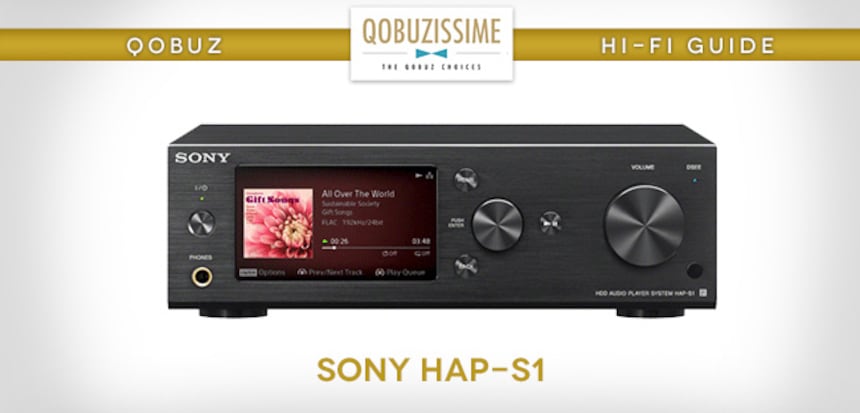
While the HAP-S1 features both an Ethernet and a WiFi connection for both firmware updates and internet radio, it?s not a network audio player.
The networked connection allows you to move audio files onto the HAP-S1?s internal HDD using the HAP Master Transfer application, and the HAP-S1 plays them locally. Sony argues that this means playback won?t be affected by a dodgy connection.
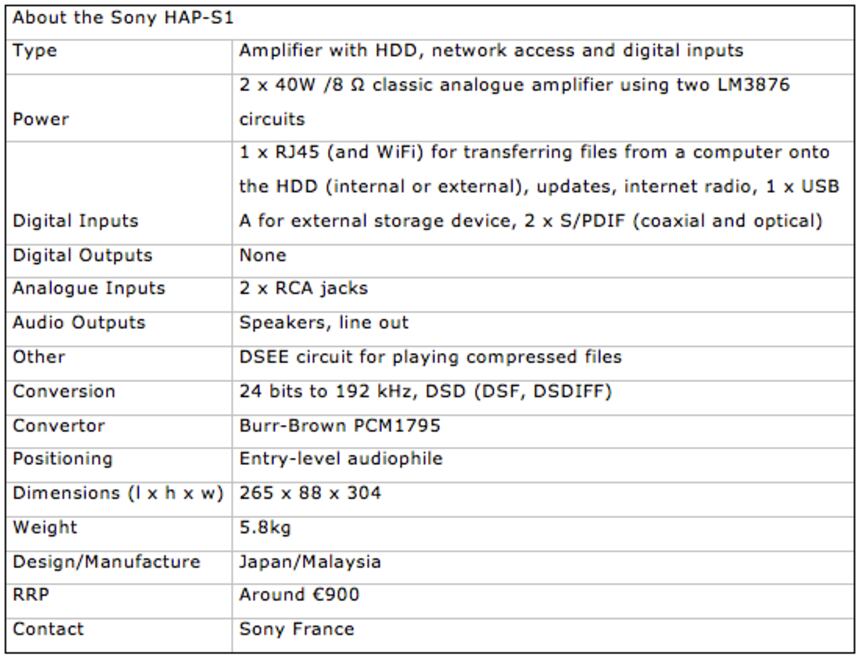
Presentation
Perhaps Sony was inspired by the purity of HD music when the team dreamed up the clean lines of the HAP-S1 (which are a general feature of the brand?s Hi-Res Audio range).
There are few buttons on the brushed anodised aluminium face (which comes in natural or black finishes), which seamlessly joins the top of the device without any ugly screws. In fact, you could say it?s got a high def-finish! The sides are painted to look like aluminium, but it?s not obvious, and they are also smooth and screw-less.
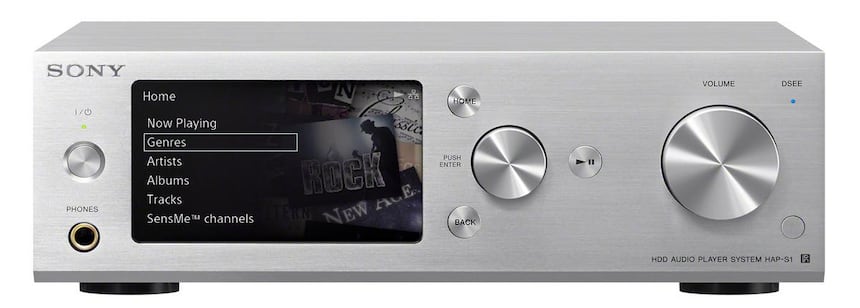
On the front is a colour screen, which is comfortable to read (it shows the type of file playing, as well as its sample rate and bitrate), with the power button, a green indicator light, and a standard 6.35mm headphone jack all to the left.
Immediately to the right is the "Home" button, which takes the HAP-S1 back to the welcome page, the clickable scroll wheel for the menus, and underneath, the "Back" button, which does exactly what you?d expect it to.
It?s simple, intuitive and efficient. Further right there?s a Play/Pause button, and the volume control, which works using an optical rotary encoder (with none of the friction of a traditional potentiometer, there are none of the sound problems that come with ageing components).
A small receiver window reminds you that the HAP-S1 can be used with a remote control, but only for the main controls (volume etc.), and a few other things we don?t like getting out of our chairs for, like skipping back and forth as well as fast-forward and rewind (done by holding down the relevant button).
If you want all of the controls in your hand, as well as the track and album info and imagery, you have to download the HDD Audio Remote application for iOS and Android devices.
Manufacture
The casing of the HAP-S1 is made up of 1mm thick folded steel. It?s compact and rigid, and reinforced by the solid one-piece front and top of the device.
The flipside of this compactness it that the HAP-S1 looks a little overcrowded inside as you can see in the image below, with the front section lifted up like a car bonnet. Where is the space for this hard drive then?
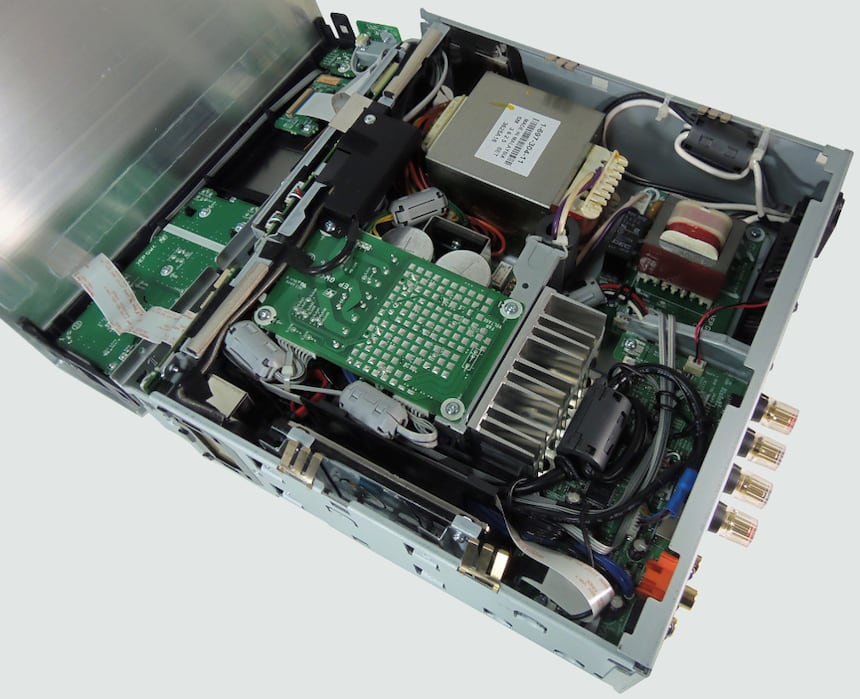
Said HDD is a 2,5? 500GB 5400 RPM Toshiba SATA model, mounted on a silent block on the right hand side (at the bottom of the photo). We took it out if the HAP-S1 to take a photo of the rest of the internals, which are more or less similar to the DAC equipped UDA-1 amplifier.
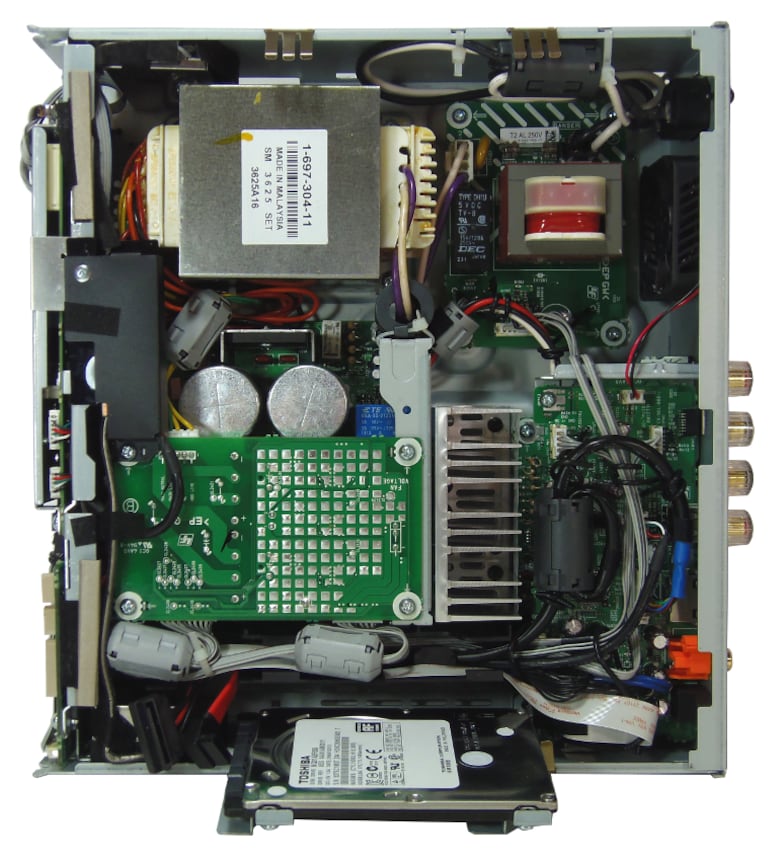
On the left hand side of the unit (at the top of the photo) are the transformer and the standby power. On the right (the bottom of the photo) is the power supply for the electronics with two large filter capacitors to provide the amplifiers with current.
Along the rear face is the card for the digital signals, and underneath, the two analogue inputs and the outputs for the converted digital signals.
Connectivity
As far as digital inputs go, the rear of the HAP-S1 offers two S/PDIF (coaxial and optical) connections, the Ethernet jack we spoke about in the introduction, and a USB A socket for an external memory (HDD, USB stick).
As far as the analogue elements go, you can link up two sources via RCA jacks, and also output an analogue signal by connecting to the AUX of a more powerful amplifier. There are two speaker connections, which take both exposed wires and banana plugs.
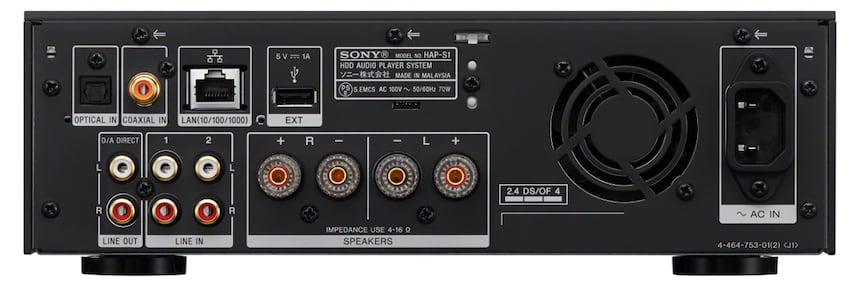
Power supply and amplification
The power supply and the amplifiers share the same card, in order to have the shortest electrical journey time between them. Filtering is provided by two Nippon Chemicon 6800 µF/50V capacitors, which matches up to the power delivered by the amplifiers.
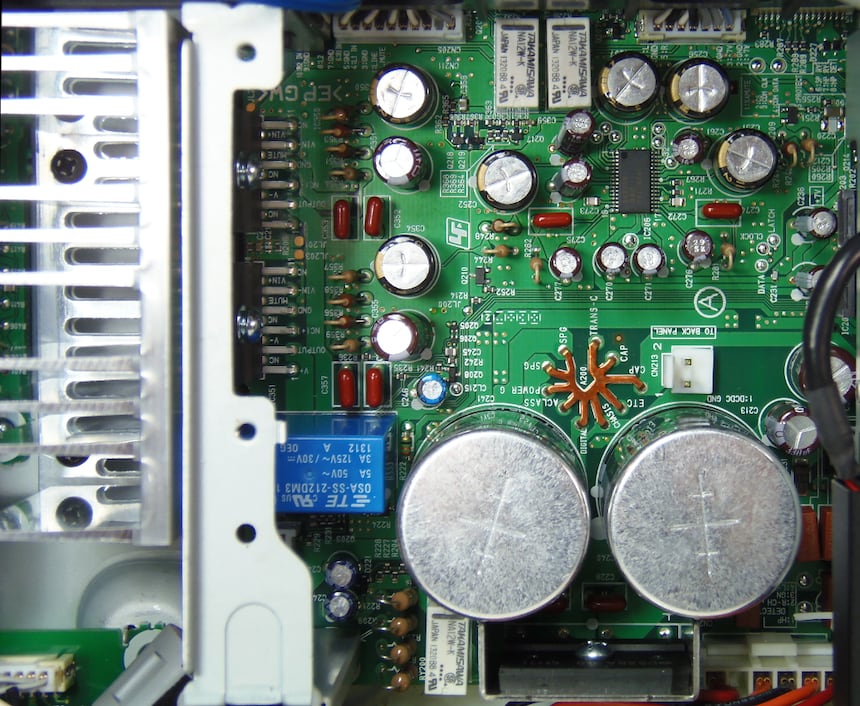
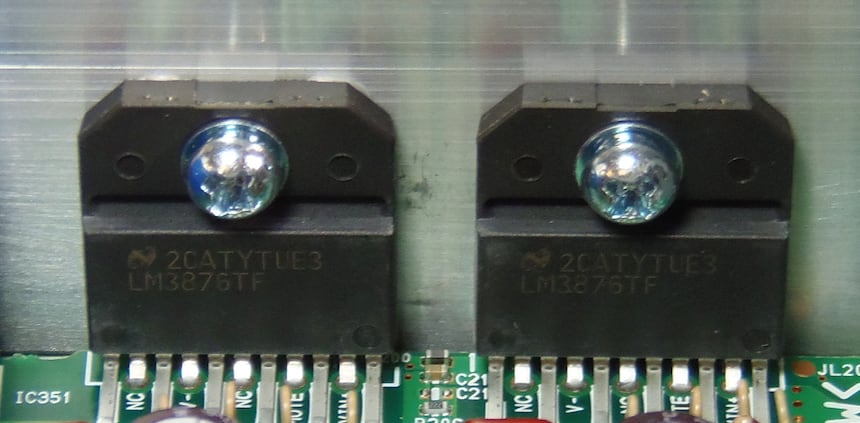
These are integrated LM3876 "Overture" high performance amplifiers made by National Semiconductor, which can be seen alongside the aluminium radiator used to get rid of the heat they give off!
You can also see a sort of spider shape in between then filtering capacitors (no, not a red one like in True Lies), but a copper one.
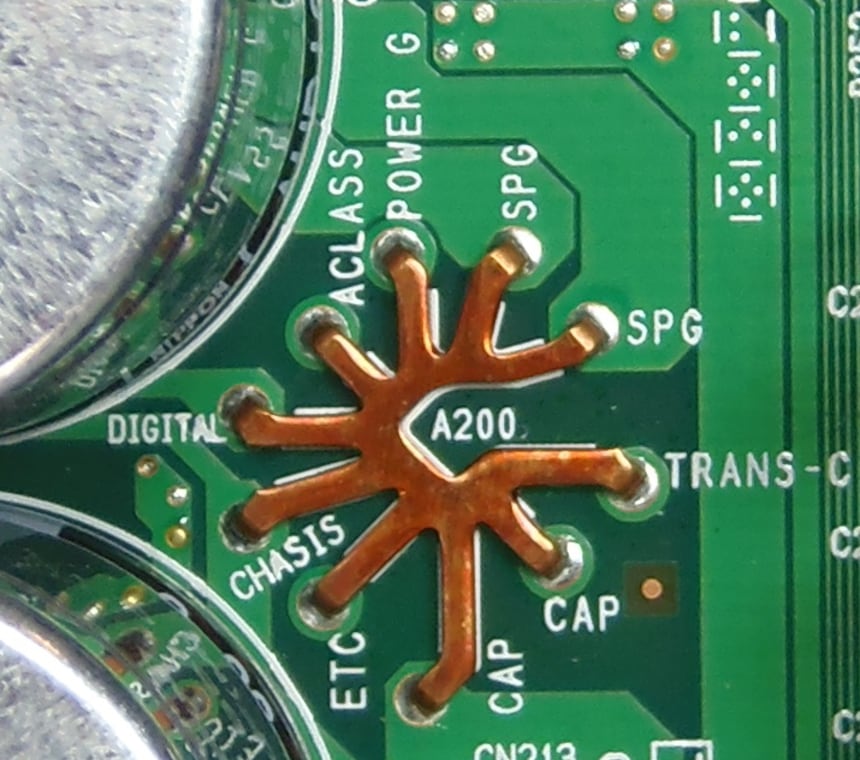
This is a "star ground", where the different return currents (or "grounding") from the HAP-S1 are separated.
This cuts out noise-producing ?ground loops? and also means that the returning currents don?t pollute the low-amplitude analogue signals, the currents joining together close to the original electrical source, the filtering capacitors for the power supply. You can see on the close up that the returns are clearly marked out on the printed circuit.
Sony have opted for the perfect solution for the return currents (which they also adopted for the UDA-1).
This card also carries an NJW1194 integrated circuit made by New Japan Radio Co which deals with volume and tonality (on the upper right of the photo, under the relay), the second of which can be bypassed in the settings.
A second power supply is located, with the components upside-down, above the power supply for the amplifiers. It supplies the 5V to the digital circuits and manages the 6V and 9V used by the fan, the first for normal ventilation, the second for more powerful ventilation when the disk demands it.
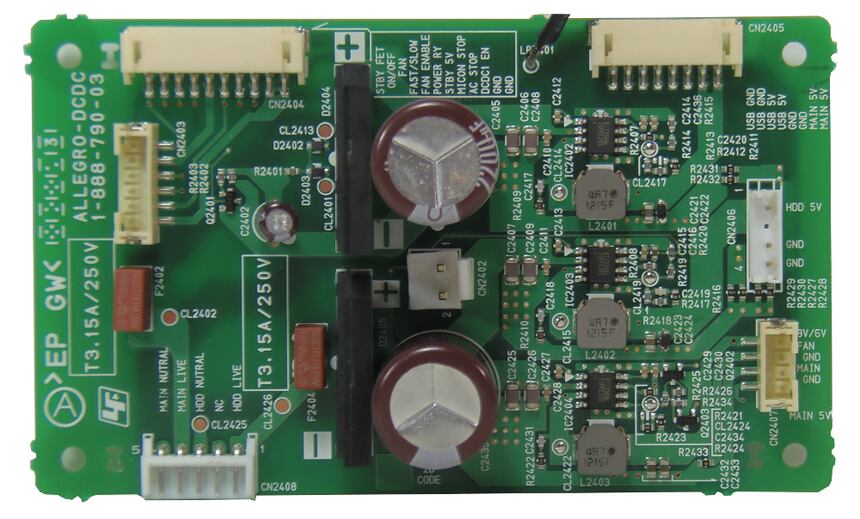
The digital inputs
These are grouped together on a card covered in a web of wires. At the centre is a Sanyo LC89075 integrated circuit that receives the digital signals, converts the analogue input signals with an anti-aliasing filter, and selects the audio.
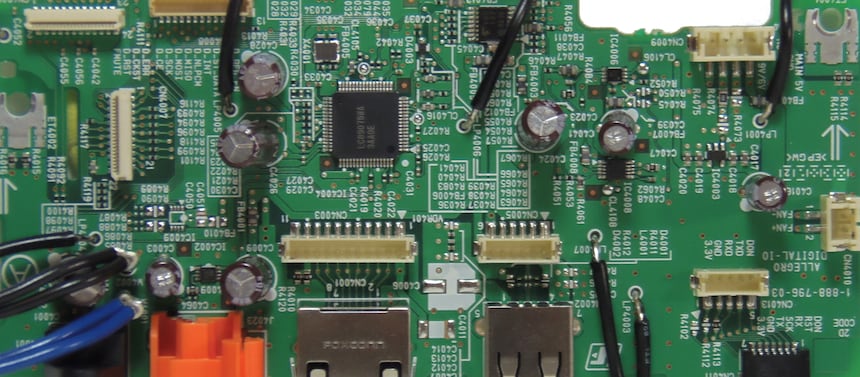
Ariadne would struggle to find her thread in this electronic maze, and with nothing that looks like a network card in the box to be seen, we had to follow all the tangles to find the network input on a panel on the inner wall.

It?s definitely there, on the left side of the inner wall, since it?s next to the little metal box with two antennas (next to the HDD) that is the Wi-Fi node (which also explains the use of painted plastic rather than aluminium on the removable pads). The card on the right hand side with the ARM processor runs the HAP-S1.
The view below shows the second side of the circuit to the left, which is plugged into a second card that it completely hides. You can also see an Altera Cyclone IV programmable circuit, which we guess is there to deal with processing the networked digital signals in order to stock them under Sony?s proprietary format.
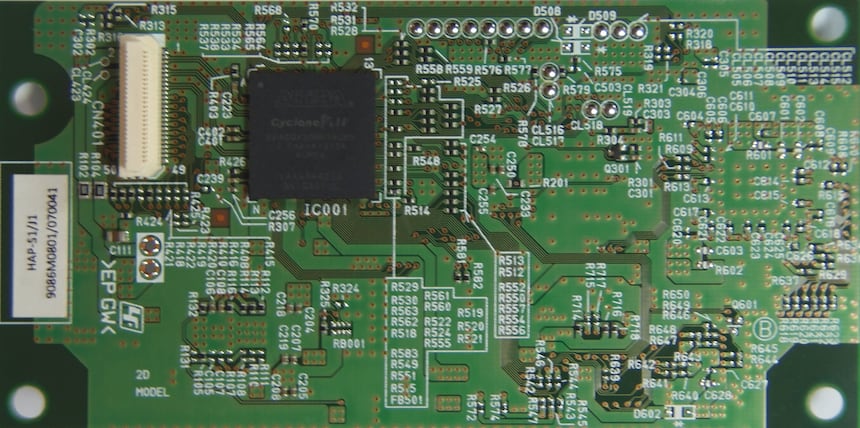
This other view shows the hidden part of the iceberg, meaning the circuit the first one plugs into. Regretfully we didn?t go further with our teardown, as it all got a bit too risky.
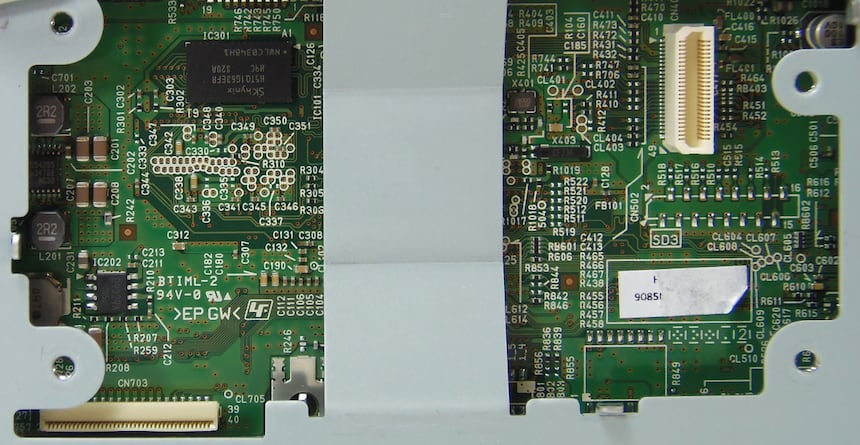
The rear view of the facade with the card, which supports the optical encoder volume control and the navigation controls (left) and on the other side the display and electronics, as well as the headphone jack and power button.

Digital-Analogue Conversion
After making some space around the digital-analog converter, we managed to take this picture of it.
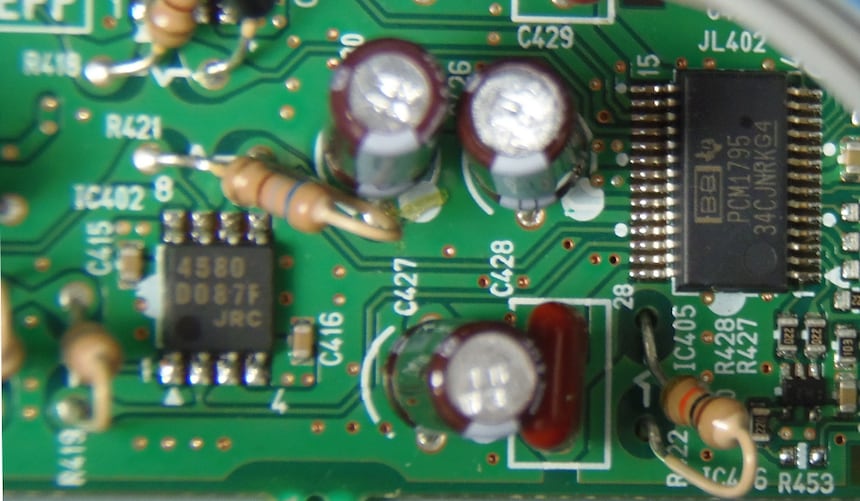
It?s a high quality Burr-Brown PCM1795 model, which can process signals up to 24 bits to 192 kHz as well as DSD (Direct-Stream Digital) signals. The filtering after conversion is carried out using NJM4580 low noise operational amplifiers, with audiophile quality passive components, in particular plastic-coated capacitors.
Use and Listening
Transferring files from your computer to the HAP-S1?s internal HDD or an external USB disk is relatively easy using the HAP Music Transfer software.
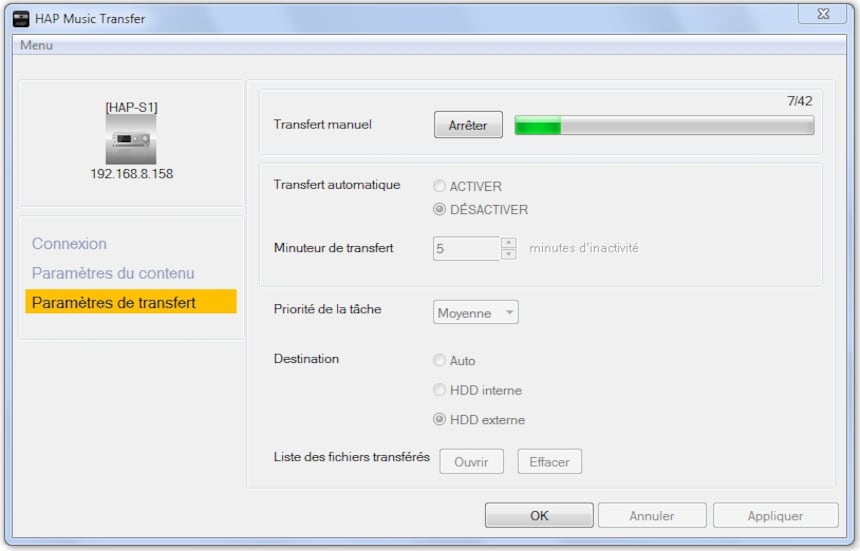
On top of this there?s also the Explorer HAP software to manage content on the HAP-S1?s drives and on your PC, which works like Windows (deleting, moving, drag and drop...).
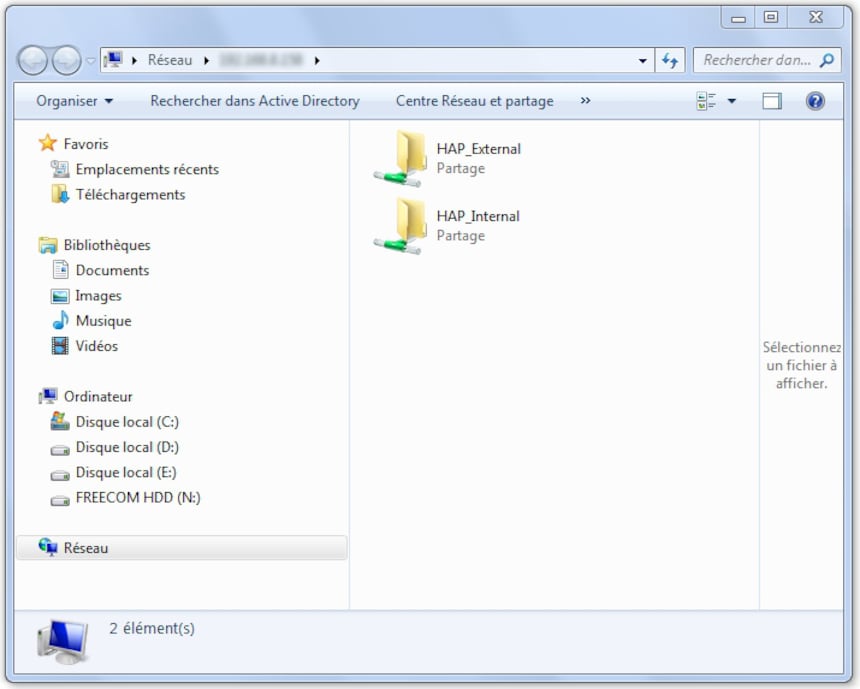
The player is easy to use. As in the Qobuz app, the start screen let?s you select between "Genres", "Artists", "Albums", Tracks", ?Station SensMe?? (which automatically analyses and categorises tracks according to their tone and tempo using a 12 Tone Analysis developed by Sony, which seems to work well), "Playlists", etc, and you navigate to pick what you want to listen to. This can be done using the front controls on the HAP-S1 or using an Apple or Android smartphone or tablet.
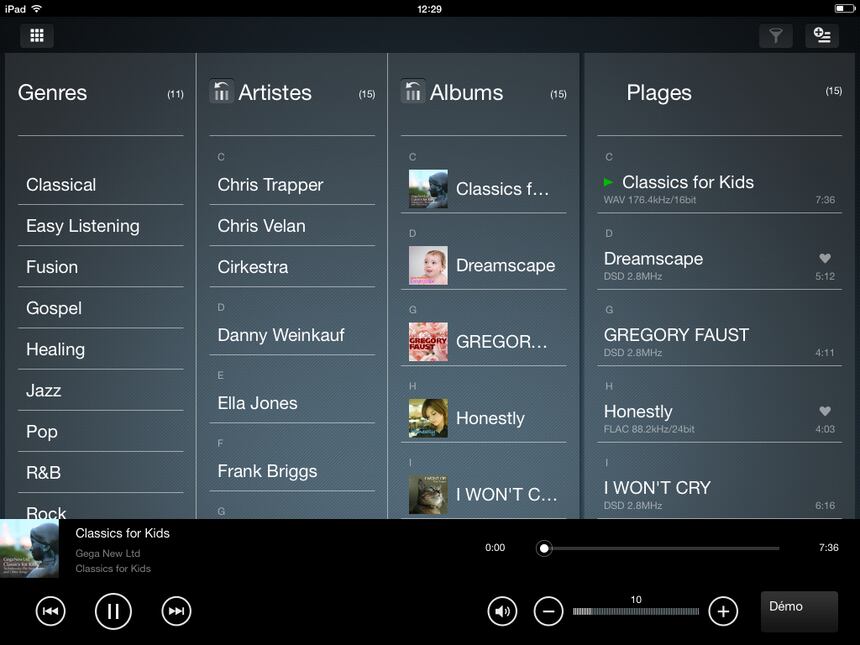
You don?t need to be a genius to understand cause and effect. The HAP-S1 conversion electronics are the same as those in the UDA-1 and the amplification is the same but a little beefier. As expected, we found the HAP-S1 had the same high-level sound quality we heard when we tested the UDA-1, and they both definitely deserve their Qobuz Choice.
As we said on another recent review, higher quality doesn?t have to mean higher price, and both the HAP-S1 and UDA-1 are a case in point.
According to our ears, the HAP-S1 provides extremely accurate playback of the music contained in the files we tested.
With music as unspeakably sweet and melancholic as the Nimrod extract from Sir Edward Elgar?s Enigma Variations (album Last Night of the Prom's), the HAP-S1?s sound reproduction plunges you into a beautiful and serene world where the music makes the electronic wizardry disappear completely.
We also appreciated the reproduction of different sections from the Fantasia on British Sea Songs which benefitted from the finesse and aeration of the sound, the excellent differentiation of the instruments and the sound levels, all with very good dynamics and a considerable amount of power left over.
The excellent CD playback was bettered by listening to Studio Masters or DSD files like the wonderful The Golden Age from Beck?s Sea Change in the Studio Masters 24 bits to 88.2 kHz version. The introductory guitar chords took us back to listening to My Sweet Lord by George Harrison and we had the impression we were hearing the ?pure analogue? so prized by vinyl aficionados.
As for the Allegro from Mozart?s Violin Concerto No. 4 in D major in the DSD 2,8 and 5,6 MHz versions (2L.no test files), here the HAP-S1 really masters high-level sound reproduction. Everything?s there in the right place, the orchestra in the room and the solo violin singing easily into the highest notes with the subtlest details there to hear.
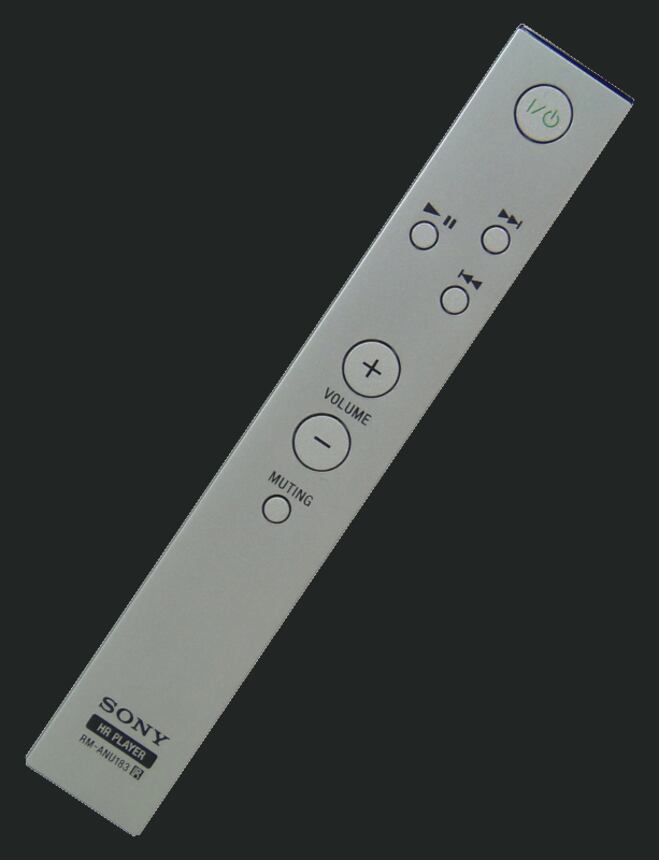
We?ve already announced it, but now it?s official. We?re awarding the Qobuz Choice for Sony?s HAP-S1, and to a manufacturer that has proved that it can create high quality products at accessible prices for a large number of fans. With beautiful sound and beautiful design, it?s a piece of audio kit that?s a pleasure to both look at and listen to.
Online Help Guide (French)
Playback capabilites
Contrary to Sony?s indication that playback was limited to 96 kHz for the optical S/PDIF input, our 176.4 and 192 kHz files worked just fine.
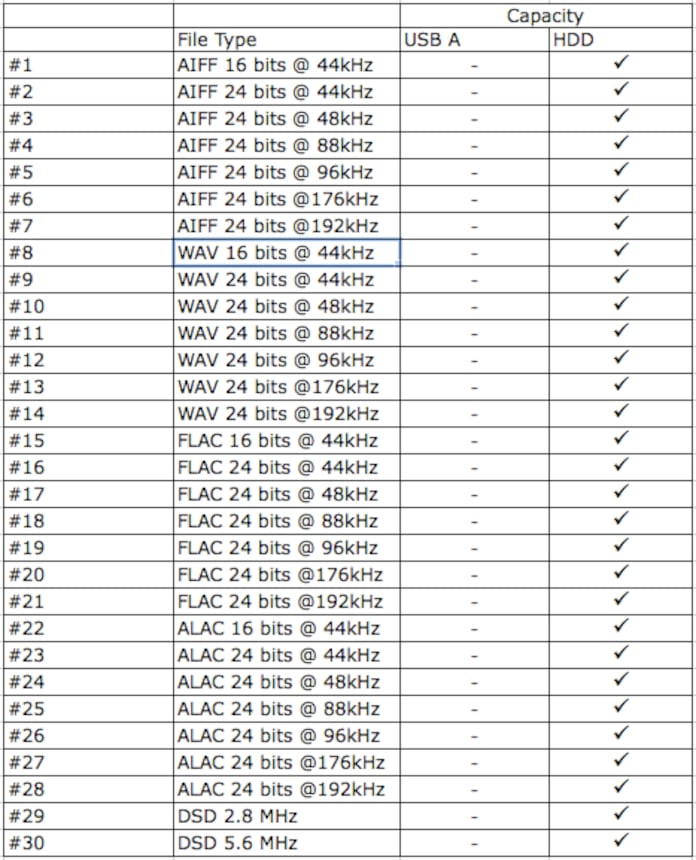
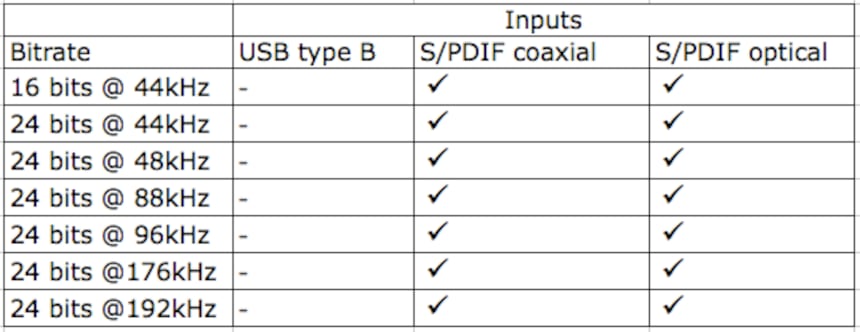
Original Article Link: https://www.qobuz.com/info/Hi-Fi/Bancs-d-essai/Sony-HAP-S1174498
Original Author: Philippe Daussin
Translator: Jethro Turner

